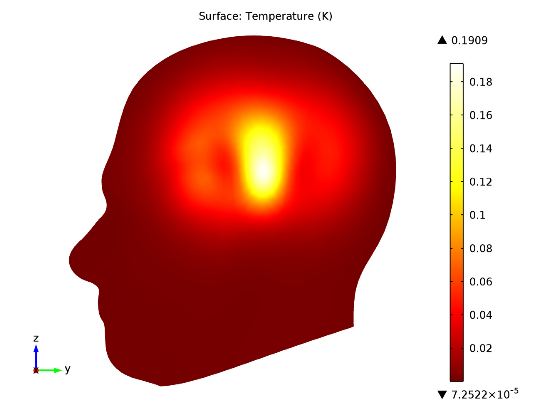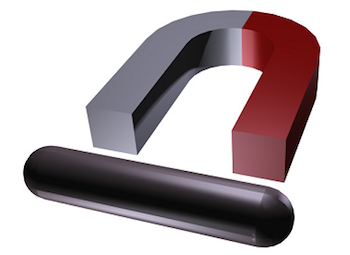Electromagnetics Blog Posts

Specific Absorption Rate (SAR) in the Human Brain
It seems everyone and their kid brother has a cell phone these days — and we are constantly using them. We don’t just rely on them to make calls anymore, either; they serve as our maps, calendars, to-do lists, channel for social interaction, and so forth. This continuous use begs the question: “What about the radiation our phones emit, and how much of it is absorbed by our brains?” When considering this, scientists use the specific absorption rate (SAR) to […]

Analyzing Electrical and Thermal Conductance in a Contact Switch
A contact switch is used to regulate whether or not an electrical current is passing from a power source and into an electrical device. These switches are found in many types of equipment and they are used to control, for example, the power output from a wall socket into a device when it is plugged in; the currents passing across the circuit board of a computer; or the electricity powering a light bulb when the switch is flipped on. Because of their […]

Simulating Thermal and Electrical Stresses in Medium Voltage Cables
Underground medium voltage cables are often used to deliver electrical power from a transmission system and into the home of consumers. In the United Kingdom, these cables carry hundreds of amps at voltages between 11 and 33 kV, a typical voltage of electrical transmission cables around the world. Analyzing the stresses that these cables are exposed to over their lifetime is important for ensuring both consumer safety and energy efficiency. Researchers from the Glasgow Caledonian University in Scotland used COMSOL […]

Laser Beam Welding Gets a Magnet Make-Over
Our day-to-day lives are dependent on the safety of technical systems and processes. We blindly trust that reactor vessels withstand the test of time, that the train or ship we’re on does not break down. These metal structures, in turn, rely on accurate welding processes. Here’s where BAM Federal Institute for Materials Research and Testing comes into the picture. BAM researchers have been working on improving upon the high-power laser beam welding process in order to promote safer and more […]

A Multidisciplinary Approach to Electronics Design
Sharp is a powerhouse in the electronics industry, involved in televisions, liquid crystal displays, LED lighting systems, solar cells, multi-function business machines, and many other electronics-based products. One of a global network of Sharp R&D laboratories, Sharp Laboratories of Europe (located in Oxford, England), has been busy researching and developing LED lighting, display technology, microfluidic lab-on-a-chip, and energy systems for incorporation into Sharp’s products.

Quick Intro to Permanent Magnet Modeling
I’ve written several blog entries involving permanent magnets, in one way or another. Reading those may have raised the question “what about a more simple introduction to permanent magnet simulations?” Fair enough, here’s how to model a permanent magnet and its surrounding magnetic field.

Modeling of Coplanar Waveguides
The Coplanar Waveguide (CPW) is commonly used in microwave circuits. COMSOL Multiphysics, with the RF Module, makes it easy to compute the impedance, fields, losses, and other operating parameters needed when designing a CPW.

A Recipe for Induction Stove Design Using Multiphysics Simulation
When I was little, I used to love spending the night at my grandparents’ house, where I was allowed to watch TV, stay up late, and in the morning, help my grandmother make pancakes. The hardest part was always waiting for her old, slow electric burner to heat up — to my six-year-old self, it seemed to take hours for the burner to become hot enough after we’d finished mixing the batter. Luckily for me, and for other impatient chefs […]
